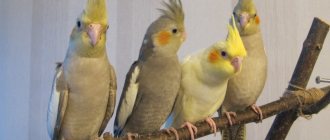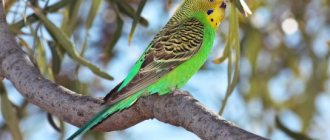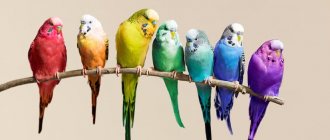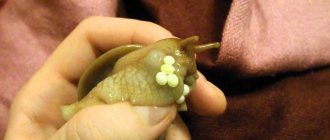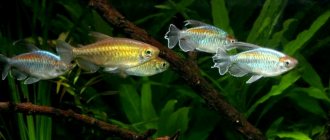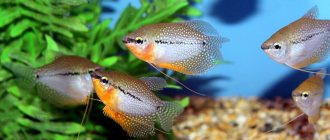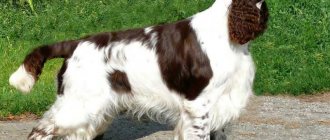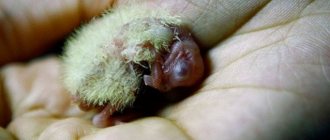The funny and inquisitive Corella parrot can become a loyal friend and family pet. But before purchasing a cockatiel, you need to learn everything about the features of keeping these parrots in the house.
One can only guess which other wild animals will be domesticated and tamed in the future by the king of nature - man. But we can say with one hundred percent certainty that parrots will not cease to be one of our favorite pets.
Particularly popular, along with budgerigars, are cockatiels or nymphs - funny birds from Australia with bright yellow, white or gray feathers and very pretty faces, if one can say so about parrots.
Photo of cockatiel parrots and nymph cockatiel
When they talk about cockatiels or nymphs, they mean the same parrots.
Yellow cockatiel parrot or nymph
Gray cockatiel parrots with yellow heads and orange cheeks
Full gray cockatiel parrot
How long do Corella parrots live at home?
When planning to purchase this cute and not particularly whimsical pet, the future owner is primarily interested in how many years the new family member will stay with him.
In natural conditions, cockatiels live no more than ten years, since they need to get their own food, which becomes difficult with age, and to escape from predators, which is also not always possible.
Under natural conditions, cockatiels live for about 10 years.
And in captivity, these birds feel quite comfortable and, with proper care, can live up to 18 years. There have been cases when cockatiels, thanks to the tireless care of their owners, lived up to 30 years.
At home, cockatiels live for about 18 years.
What needs to be done to make this pretty bird happy with its chirping for a very long time?
- Provide proper, high-quality and nutritious nutrition. Despite the fact that cockatiels are not at all picky about food, the grain must be of good quality, which can be checked by sprouting it. In addition to grains, the diet must include greens. You should also give plenty of fruit . And sweet, salty, fried and buttery foods should be prohibited and inaccessible to the parrot, as he can take advantage of your inattention and harm himself even with a small piece of bun. Thus, the cockatiel's diet should be as natural as possible.
- The place where the pet's cage is located must be protected from drafts and cold , since in these tropical birds the love for warmth is inherent at the genetic level. The most suitable temperature for them will be 20-25 degrees
- You can’t take risks by placing a cockatiel in a draft even for a few minutes , arguing that you are hardening the parrot, as this will greatly affect its health and, accordingly, its life expectancy
- In winter, when central heating dries out the air, it is necessary to provide optimal humidity for the pet - 55-60% , which, by the way, is very useful for the owner himself
- Cockatiels are also very sensitive to various foreign odors: tobacco, perfumes, air fresheners, and disinfectants should be used away from the bird’s location , as they can cause irreparable harm to the pet’s health
- The cockatiel should not be allowed to get into stressful situations . These parrots are very sociable and enjoy communicating with people, but at the same time they cannot tolerate sharp and loud sounds. You need to talk to them sincerely; calling them by name and frequent praise will have a positive effect on their well-being, and loneliness and inattention are like death for them
- Also, if the birds have a narrow cage, or there is a shortage of toys , this can also lead to stress.
- there is a small child in the house , you need to keep his communication with the pet under control, since the baby can unwittingly scare the parrot with loud sounds.
Always supervise the interaction between your child and your cockatiel.
So, if a Corella parrot falls into caring hands, it is guaranteed a long and happy life.
Necessary living conditions
Optimal climate
Corellas come from Australia, where the climate is hot and humid, suitable for their habitat. Parrots living at home should be as comfortable as on their native continent. Your task is to provide the birds with a microclimate similar to the natural one.
You need to take care of proper lighting. During the hot season, your pet needs sunbathing. On clear, warm days, take the cage with the bird out onto the balcony for a maximum of half an hour. Direct sunlight can burn your parrot, so create shade by covering part of the cage with cotton cloth.
If it is not possible to walk your cockatiel outdoors, create artificial lighting in the room. Ultraviolet lamps will help you. Their light is as close to natural as possible. Do not place lamps closer than fifty centimeters near the cage.
The cage with the parrot should be in a quiet place where there are no radiators or drafts. Do not place the cage in the kitchen - this is not a suitable place for a bird. There she risks being poisoned by the smell of burning Teflon or getting burned over the burner.
The correct location of the cage is not the only condition for the normal maintenance of a pet. In the room where the cockatiel lives, there should be a temperature of twenty to twenty-five degrees and a humidity of sixty to seventy percent.
You also need to maintain a certain light regime - the parrot should sleep from ten to fourteen hours, depending on the time of year.
Failure to comply with the rules described above often leads to various complications with the health of the cockatiel: from problems with plumage to decreased immunity and weakening of the body. In advanced cases, the pet may die due to the disease.
Emotional impact
When purchasing a cockatiel parrot, prepare for the fact that it will require maximum attention from you. After all, these birds cannot remain alone for long. Daily communication with you, games and conversations will save your pet from depression, apathy and an aggressive state.
For full development and a feeling of happiness, the parrot must be periodically released for free walks around the room. Corellas love to walk on the floor and sit on upholstered furniture. Therefore, be careful when moving around the house so as not to step on or sit on the bird, or crush it under the door.
If there are animals in the house, you will have to constantly ensure that they do not injure the parrot during its walk. Be sure to close the windows when you let the bird fly around the room.
Suitable diet
Corella parrots are granivorous birds, so the basis of their diet is grains. You can buy him a grain mixture that includes oats, millet, canary seed, raw sunflower seeds, wheat, corn, rapeseed, wildflower seeds, sesame and hemp seeds, and nuts. You can feed with monofeed - certain types of grains.
In addition to the main food, your pet should be given additional food: low-fat cottage cheese, boiled eggs. Also, the bird's diet should include seasonal vegetables, fruits, berries, herbs and various mineral supplements. In winter, when there are few seasonal vegetables and fruits, you can add liquid vitamin complexes to the water. Artificial vitamins begin to be given when the cockatiel is one year old.
Do not feed your bird expired or spoiled food. Food from your table is also prohibited - nothing salty, sweet, fried, smoked, or pickled. Corella should not be given coffee, tea, alcohol, cocoa - only clean water or natural juices, for example, beetroot or carrot.
Cleaning the cage
Keeping a parrot includes periodic cleaning of the cage. If this is not done, mold and mildew may appear. Because of this, the cockatiel may contract an infection or become poisoned.
Twice a week it is necessary to wash the cage and its equipment with warm water. To make the process easier, you can use an old toothbrush, which can easily handle dried food debris and droppings. After this, you need to wipe all items dry, and fill the tray with special sand or cover it with clean writing paper.
How to find out how old a cockatiel parrot is?
Experts say that it is better to get a cockatiel between the ages of two and three months , because that is when they adapt most quickly to a new environment.
The young cockatiel will quickly get used to the new environment
To purchase a young parrot, when determining the age of a cockatiel, you need to pay attention not to size, because both young birds and adults are the same, but to the color of feathers, eyes, beak and behavior in general :
- At a young age, the color of these parrots is not very bright, even a little dull, the feathers on the tail are short, tousled and not the first freshness, since young birds do not yet know how to properly “beautify”: during cleaning they sit not on the perch, but on the bottom cage and, having cleaned themselves, immediately get dirty in their droppings. Also, in young animals there is a bald patch on the top of the head , which disappears after the first moult
- If the feathered pet is gray, then in young animals the beak and legs will be a soft pink hue, and in adults they have a darker and more saturated color
- You should also pay attention to the claws, which in young birds are light and soft
- Cockatiels of a different color have a smooth, peel-free beak that speaks of their youth.
- The eyes of adult cockatiels , in contrast to the paws and beak, are much lighter than those of young parrots : at first the iris of the eye is almost black, over time it acquires a light brown color, that is, it seems to fade in old age
- Even young birds cannot boast of a chic crest, since in young birds you can count only a few feathers in it , and they are not bent forward, like in seasoned birds, but grow straight
- If you pay attention to the behavior of birds, you will notice that young animals are characterized by clumsiness and clumsiness
Cockatiel chick
Description of the species
In nature, Corella lives in Australia, preferring areas that have water resources, as well as herbaceous and shrubby vegetation.
Paying attention to the body structure, it is worth noting the size of the parrot, which differs from the standard wavy one. The rosy-cheeked bird is much larger, about 30 cm long, half of which is in the tail.
Although the parrot seems plump, this is an optical illusion due to its dense plumage. The average weight of a bird is 100 g. It is worth paying attention to the color, which in nature helps to distinguish a female from a male, however, due to the emergence of a huge number of varieties, it is almost impossible to determine gender, so pay attention to behavior.
Learn everything about lovebirds.
In nature, the male has brighter plumage, which is colored in shades of olive color. The crest and head are bright yellow. The beak is gray in color, similar in shape to the beak of a Cockatoo, but several times shorter. The female has a dirty gray color, the belly is colored brown, and pale brown spots are noticeable on the cheeks.
It is worth noting that the color of chicks up to 1 year old matches the color of the mother.
The Corella parrot is a long-liver, but when answering the question of how long they live at home, it is worth paying attention to the diet and living conditions. On average, a bird can outlive a dog or cat, living up to 25 years.
Did you know? Corella was first described in 1788, but was brought to Europe and began to be bred only in the middle of the 19th century.
Corella parrot care, what kind of cage does a corella parrot need?
Nymphs love space, so you need to purchase a cage large enough.
Cockatiels love to move freely around rooms
IMPORTANT: If it is not possible to buy a spacious cage for your cockatiel, then every day, in order not to harm the pet’s health, you need to let it fly.
Basic requirements for a cockatiel cage:
- the rods should not be metal and located at a distance of 1.5-2 cm
- The door is spacious so that when pulling it out you don’t injure your pet
- There should be as few wooden elements in the cockatiel’s home as possible, since they absolutely love to peck at something all the time
- the cage must have perches, a rocker, a feeder and a drinker
- for entertainment, you need to put a mirror, bell or other toy in the cage
- These parrots take care of their hygiene, so at least once a week (every other day in summer) you need to put on a bathing suit, which must be removed immediately after the bathing procedure is completed.
IMPORTANT: You need to clean the cage every day, so for your convenience and the peace of mind of your pet, it is better to choose a home with a retractable tray. The perches should be cleaned with a brush or sandpaper. The water needs to be changed every day, after washing the drinking bowl.
To keep cockatiels you will need a spacious, equipped cage.
Preparation for breeding
After the family union is formed, the next step is preparatory actions. Interestingly, the breeder can plan the breeding of parrots independently. It is not so difficult to push birds to procreate; it is enough just to provide them with all the conditions. For breeding, cockatiels need the right diet and a comfortable nest. But first of all, you should consider when - in summer or winter - it will be easier for birds to produce offspring.
Timing for mating
Tame cockatiels, unlike wild ones, can breed at any time of the year. Breeders have determined the optimal period for breeding - from May to October. The summer-autumn season has long daylight hours and an abundance of fresh vitamin products. Under such favorable conditions, the breeding of cockatiels will be more effective.
Attention! With a lack of natural light, the bird’s body lacks sex hormones. By gradually increasing the length of the day, the owner helps the birds mature for mating.
The natural instinct of nesting awakens in birds long before the appearance of the first egg. To breed tame cockatiels, you need a nesting house, when the female sees it, she understands that the time has come.
Nest house
So, the nest serves as an incentive for breeding. What should it be like? In nature, cockatiels nest in hollows closed on all sides, where there is only one hole. This is an indicator that birds need to hide from prying eyes. You can see how two cockatiels mate, but hatching the eggs is a mystery. The owner, expecting offspring from his charges, must provide them with a cozy nesting place - a box or nest box. You can buy it at a pet store or make it yourself.
It is important to know! It is not recommended to use plywood and chipboard during construction, as they contain harmful resins. Suitable material for the house is deciduous wood boards. Coniferous species cannot be used - they have a strong odor.
The tree traps noise and heat, and the cockatiel feels protected in such a nest. According to the design of nesting boxes, there are horizontal and vertical ones. The first has a much larger bottom area, which is very good - there is enough space for everyone. The convenience of the second option lies in the high-lying entrance, so that the chicks cannot fall out of the nest.
A good house meets the following requirements:
- minimum dimensions: length and width 40 cm, height – 30 cm;
- entrance on the side of the front wall: round, corresponding to the size of the bird;
- a perch under the entrance outside and a long step inside so that the bird does not fall into the house;
- a depression in the bottom to prevent the eggs from rolling out;
- removable or hinged cover.
A layer of dry sawdust and planed branches is poured into the finished nest. Holes are made in the lid or walls for ventilation. The house is fixed to the outside of the cage, and if the birds live in an aviary, they are placed inside on a hill. The nesting box should not be placed too high, otherwise the young individual will fall and break during its first flight.
We recommend reading: How to determine the sex of a cockatiel parrot
Diet
Proper feeding of cockatiels during the preparation period is the key to success during breeding. Even in early spring, you need to start feeding the birds with healthy foods:
- sprouted wheat;
- nuts;
- boiled egg;
- fruits;
- grated carrots.
It is necessary to add calcium supplements to food and additional vitamin and mineral supplements. The cage should always have fresh twigs, sepia, and chalk. The grain mixture is in factory packaging marked “for the nesting period.”
What to feed your cockatiel parrot?
Your feathered pet's diet should consist of high-quality grass seeds and plant grains, fresh fruits and vegetables; you can give dandelion and celery leaves.
Cottage cheese, eggs and nuts in small quantities are welcome It is advisable to put fresh branches of birch, rowan, and cherry in the cage. The parrot's food should be rich in proteins and amino acids.
IMPORTANT: The daily food intake is from 40 to 50 g, depending on the age and size of the cockatiel.
It is necessary to provide your cockatiel with adequate nutrition.
How to care for a cockatiel
Proper care of a cockatiel is an indispensable condition for keeping a bird in captivity. To make your pet friendly, it is better to take him home at the age of one month. A young parrot will easily get used to a person, and caring for a friendly creature will not be a burdensome task, but a pleasant concern. To maintain a healthy and cheerful lifestyle for a tame cockatiel, you need to provide some nuances and properly organize the space.
We recommend reading: What to feed your cockatiel parrot at home
Arrangement of the cage
To keep one cockatiel parrot, a 100/40/50 cm rectangular cage with a secure lock on the door is quite suitable. If you live in your own home, and there is an opportunity to create better conditions for your pets during the warm season, arrange a large enclosure in the garden, but in the process of creating an ideal home, do not forget about safety. Open air and sunlight are very beneficial for parrots, but no less important is protection from precipitation in the form of a roof, as well as a vestibule that will not allow the bird to fly free.
Cockatiels love to climb on bars, so it is important that the cage has not only vertical, but also horizontal wires. An indoor enclosure must be equipped with sufficient equipment, but you should not be too zealous; large individuals should be comfortable moving around inside.
Essential items:
- two feeders for different types of food;
- drinking bowl;
- wooden perches;
- bathing container, sandbox;
- swings, ropes.
Cockatiels are very active and playful, leaving behind a lot of trash and mess. The cage will have to be cleaned frequently as it gets dirty, plus it will also have to be disinfected once a week in order to destroy pathogens. The paper in the tray should be removed daily along with droppings and spilled food. If the cage tray is covered with sand or sawdust, they should be replaced every 5-7 days.
It is better to restore order in your home by transferring the birds into a transport cage or cage, so as not to frighten or injure them. The first step is to dry clean the feeders, equipment, tray and cage bars, then rinse everything thoroughly and dry.
We recommend reading: How to determine the age of a cockatiel parrot
Diet
Before you get a bird, it is important to find out what your cockatiel parrot eats at home. It is not recommended to offer your own food, as many ingredients are contraindicated. To maintain health and good mood, cockatiels should receive special grain birdseed, fresh fruits and vegetables, and animal products every day. In the wild, birds catch and eat insects; at home, you can give cottage cheese and boiled eggs as sources of protein.
Cereal mixtures from the pet store contain grains that parrots love:
- canary seed;
- millet;
- hemp;
- oat groats.
You can sprinkle your pet with some sunflower seeds, soaked wheat, and legumes. Fresh herbs are a wonderful treat and provide valuable vitamins and fiber. During the period of molting and nesting, birds need additional substances, so it would be correct to add vitamins in liquid form to their food.
Microclimate
The environmental parameters in the apartment should be close to optimal for keeping and caring for a tame cockatiel parrot. The temperature should be maintained at 18-20°C, air humidity - from 70 to 80%. A parrot needs to rest and sleep 12-14 hours a day, and bright light and noise will interfere with this, therefore, you should not place the cage on a window or near a TV.
Important! You cannot smoke, spray aerosols, or paint your nails indoors - this poisons the air. For a small bird, even a weak concentration of harmful substances can be destructive.
Oxygen is necessary, and frequent ventilation will benefit her, but drafts can lead to a cold. It is important to take the bird to another room while the window is open.
How to trim a cockatiel's claws
In captivity, parrots can grow long claws because they are unable to jump on trees and grind off excess nails naturally. If a bird in a cage jumps on wooden perches and fiddles with the twigs it brings, then the problem of overgrown claws may not affect it. Excessive, sharp scratches pose a danger to the bird, and there is nothing left to do but trim the claws of a cockatiel parrot at home with special small nippers.
When carrying out the manipulation, one person should carefully hold the pet, the second should carefully cut off the very tip of the claw at an obtuse angle, trying not to touch the blood vessel. If trouble does happen, you should immediately press a cotton pad with hydrogen peroxide to the wound and wait until the bleeding stops. After cutting, you should go over the cut area with a file to remove burrs and irregularities.
We recommend reading: How to teach a cockatiel to talk
Do cockatiels speak and how to teach a cockatiel parrot to speak and sing songs?
As the heroine of Liya Akhidzhakova said in “Office Romance,” “you can teach a hare to smoke,” but teaching a smart cockatiel to talk is even easier.
The main thing is to start as early as possible and not buy a pair for him, because then they will talk to each other “in their own language.”
To make a cockatiel talk, you can't buy him a pair.
First you need to let the bird get used to the owner and his hands, while talking to her all the time. There should be only one teacher, so you need to include 40-45 minutes of daily training in your schedule, possibly with breaks.
Corella needs to get used to his owner's hands
Classes should take place in a calm environment where there are no extraneous sounds. The pet must be in a cage during lessons.
You need to start with simple phrases, such as “Kesha is good”, “Kesha is beautiful”, “Hello”, “How are you”. The abundance of sonorant and sibilant consonants, as well as the vowels “a” and “o” makes the task easier, because it is easier for the parrot to pronounce them.
The phrase must be constantly repeated, addressing the pet directly, until the result is achieved.
Before speaking, the cockatiel listens carefully to the words of the owner
Intonation should not change when repeated many times. You can constantly accompany the actions performed by the parrot with comments, such as “ Kesha is eating”, “Kesha is bathing” , then the conversation will seem meaningful. After moving on to the next phrase, you need to regularly repeat what you have already learned.
To make your parrot sing, you can record songs on a disc and let him listen to them several times a day. This will soon bear fruit and the cockatiel will give small concerts.
Cockatiels are happy to make contact and learn poems and songs with their owner
Matching
Cockatiels are monogamous, in nature they choose a partner for life. To breed in captivity, they also need stable, strong relationships with each other, mutual sympathy. The breeder must give the birds the opportunity to choose: keeping several birds of different sexes in an aviary is suitable for this. This way you are most likely to get a compatible pair in a short time.
When breeding, good offspring of cockatiels are obtained by following several rules:
- parents' health;
- puberty;
- lack of family ties.
Physical health
When selecting sires, you need to carefully monitor their emotional and physical state. The ability to reproduce in the cockatiel parrot remains, despite the illness. But it is impossible to predict what kind of chicks a weakened bird will have. Injured, molting, sick parrots should not be allowed to crossbreed.
Attention! An obese bird must first be brought back to normal condition and then prepared for breeding. An overweight parrot gets tired quickly and cannot sit on eggs in one position for a long time.
Not related
Breeding cockatiels of similar blood is justified only if the goal is to consolidate the characteristics of the mutation (for example, lutino). Inbreeding - the reproduction of same-blooded cockatiels - has unfavorable consequences. Related individuals produce offspring with external defects and violations of basic functions:
- egg production in females and fertilization ability in males are reduced;
- defects of the musculoskeletal system;
- genetic failures;
- weak immunity;
- congenital defects of the beak, wings, paws.
The chicks grow slowly and develop beyond their age. Such young animals rarely produce talented, viable parrots.
We recommend reading: What to feed your cockatiel parrot at home
Suitable age
Physically and functionally, cockatiels are ready to breed at 9 – 10 months. By this time, their reproductive system has matured, but in fact, cockatiels that are less than a year old are still children. They do not want to take care of the chicks because they themselves are actively growing and spending vital resources.
Breeding young cockatiels at home is not always effective: the female abandons the clutch, and the hatched chicks often die. Careless parents do not have care skills, and the maternal instinct is still poorly developed. The eggs themselves are most likely unfertilized. Problems also arise in immature females: due to inexperience, they cannot push out an egg stuck in the cloaca.
At one and a half to two years, breeding is most fruitful. By this time, the pair of cockatiels will be sufficiently prepared, their bodies will be stronger. Childish playfulness will be replaced by calm maturity, the birds will feel the need to procreate.
On a note! The best producers are considered to be cockatiels from 2.5 to 5 years old. Subsequently, sexual function gradually fades away, and old parrots generally become infertile.
Why does the Corella parrot scream, tremble, hiss, and pluck its feathers?
Such actions of a parrot are typical if it is experiencing stress . It often happens that, having acquired a pet, the owners do not allow the bird to get used to the new environment, but begin to stick their hand into the cage, thinking that this way it will adapt faster.
However, the cockatiel perceives these actions as a threat and begins to scream and hiss, hoping to scare the uninvited guest, while shaking and plucking feathers indicates an extreme form of excitement.
Therefore, in order not to give your parrot a heart attack, you need to gradually tame it: first to your presence next to the cage, then to your voice, let it out more often and talk all the time.
When stressed, a cockatiel may tremble, hiss, or pull out its feathers.
How to determine the sex of a cockatiel parrot, how to distinguish a male from a female?
For such a delicate matter, you first need to classify cockatiels according to color and conditionally divide them into two groups:
- The first category includes parrots of gray or a color close to it, that is, natural
- to the second - all the rest
Female cockatiel of natural color
Now you can start classifying gender.
In the first group:
- The heads of males have a fairly rich yellow color and bright orange cheeks, while females have a more modest color of the head, in which gray is still dominant.
- The tip of the tail of the female is spade-shaped, rounded at the bottom , while the tip of the male is thin and sharp.
- If you carefully examine the inner side of the wings of a feathered pet, then in females you can find light oval spots there, and on the inner tail feathers there are dark stripes of a dark color
But all these differences will be visible only after the first molt, which occurs after 6 months of life, and before that, both boys and girls are colored exactly the same.
The sex of cockatiels belonging to the second color group can be determined only by behavior, although the patterns described above on the inside of the tail and wings are slightly noticeable upon very close inspection.
True, there are several more external signs that can help in determining the sex of a parrot:
- females are slightly larger than males
- The female's crest is less dense at the base, and the forehead is narrower
- the female is more restrained in behavior, and the male often frolics and jumps on two legs
- the male chirps and sings a lot
- if a cockatiel parrot laid an egg, then it is naturally a female
Male cockatiels are more active, curious and sociable than females
IMPORTANT: There are exceptions to all rules and it is better to let a specialist determine the sex, having previously passed the appropriate tests: a pen, a cloacal wash, or a DNA test.
Breeding
The optimal microclimate parameters for breeding cockatiels at home are air humidity 60–70%, temperature 22–25 degrees. If you keep them level, the parrots will be comfortable raising their chicks.
Mating and oviposition
It's fun to watch cockatiels breed at home. The displaying male becomes very affectionate. He constantly tries to be close to his friend, fingering her feathers and cooing. The female favorably accepts the advances, kisses the male, and dances. Having surrounded his partner with care, the male cockatiel ends up on her back and, holding himself with his claws, mates. Intimate acts are repeated several times a day for one to two weeks.
10–14 days after the start of breeding, the female lays her first egg. Before this, she plucks the feathers on her belly to better warm the clutch. Anticipating an imminent birth, the female becomes quiet, rolls her eyes, breathes quickly and tenses. Every 1–2 days, one egg is added to the nest. In total there are from two to five eggs in a clutch. If there are more of them, there will not be enough heat for everyone, and the embryos may die.
Attention! If the female has abandoned the nest or laid more eggs than she can warm, place them with other hens.
Hatching and emergence of chicks
Having laid the egg, the female immediately begins incubation. She does this in turn with her partner: while he is sitting on the nest, she has a new egg ready. This is why it is so interesting to breed cockatiels at home: they tend to incubate together. Twice a day the bird turns over each egg, moving them from the middle to the edge and vice versa. The embryos should not stick to the shell, and they need uniform heating.
Before the end of the incubation period (21–23 days), the female tries not to leave the clutch, and the male feeds her. And then the day comes when the first chick is born. This event is marked by a thin squeak. The babies hatch one after another for several days, and when the last one breaks the shell, the already dry, eternally hungry brothers squeak in the nest.
Sometimes unfertilized eggs or those in which the embryos have died remain. The female continues to warm them, but if four weeks have passed and the eggs are intact, remove them.
Caring for chicks
Adult cockatiels feed their babies crop milk, a thick, cloudy white substance. Towards the end of the first week of life, small cockatiels receive solid food from their parents - semi-digested grains. At this time, as at the beginning of breeding, it is worth feeding the parents with sprouts again.
We recommend reading: Corella parrot: care and maintenance, useful tips
Two weeks pass, the birds become overgrown with down and partly with feathers. The whole family becomes cramped in the nest, and the older cockatiels move back into the cage. The young remain in the house. Curious birds lean out of the entrance, learn to get out, and sit on a perch. At one and a half months, the debut flight from the nest occurs, after which the chicks no longer want to return to the cramped home. They happily fly around the cage. Parents continue to feed them for up to two months.
Features of keeping Corella parrots boy and girl
When purchasing a mixed-sex pair, it is important to understand that this will eventually lead to the appearance of chicks. Therefore, first you need to properly equip the place where the parrots are kept.
First, you need to purchase not an ordinary cage, but a so-called cage, which has a flat roof and a hole on one of the walls, except the front one, so that when the time comes to hang the nesting device.
In the nymphs' home, the length of the cage should be twice as wide as the width, so that when flying from perch to perch, muscles are strengthened and metabolism is improved, which will have a positive effect on the health of the offspring.
A mixed-sex pair of cockatiels will quickly have offspring
Other subtleties for caring for a winged pet
We must not forget that this bird comes from Australia, so the only pet that needs warmth is the cockatiel. A parrot at home should always be kept at a temperature of at least 20 degrees. It is optimal if the air is heated within 20 – 250C. If in an apartment this figure is even slightly lower, then it is advisable to purchase an additional heater for an enclosure or cage. In some cases, a lamp will be suitable for this purpose. But you must not forget to monitor the air humidity. Dryness and excessive humidity should not be allowed, as this affects the health of the cage occupant. In addition, the bird needs fresh air. Therefore, make sure that the room is not stuffy. But at the same time, drafts should not be allowed.
How to name cockatiels, how to come up with names?
If you plan to find an interlocutor in a parrot in the future, then his name should be short, laconic, contain hissing sounds and a sonorant “r”: Kesha, Gosha, Petrusha, Bisha, Shura, Rashik, Lusha, Krosh, Glasha .
If there are problems determining gender, then the nickname should be “unisex”: Chucha, Eshka, Roni .
Also, the chosen name should not be similar to the names of other pets or family members.
You can choose a name taking into account the character traits and demeanor of your feathered friend: Shurshik, Lucky, Sheiki .
Corella parrot loves to say its name
Corella parrot disease treatment
Cockatiels, in fact, like other pets, have quite a lot of diseases.
IMPORTANT: When a parrot’s respiratory process is disrupted, signs of distress appear, lack of appetite, feather loss, then this is a reason to immediately seek help from a veterinarian, who will make the correct diagnosis and prescribe treatment.
Let's look at the most common types of cockatiel ailments:
- Various eye diseases characterized by inflammatory processes in the periocular space. This could be conjunctivitis, a foreign body, or some kind of infection . Treatment of these diseases consists of washing the eyes with either a solution of boric acid (one teaspoon per glass of water) or furatsilin (1 tablet per glass of water)
- Various goiter diseases resulting from poor nutrition. Symptoms manifest themselves in the form of loose stools and inflammation of the goiter . For recovery, it is urgent to remove toxins from the body by giving the parrot activated charcoal.
- Feather loss is associated, in most cases, with scheduled molting, which occurs every six months. In this case, the feathers fall out unevenly, and bald patches may form. This process is characterized by an increase in body temperature . If the temperature is normal, and the feathers fall out of the tail especially abundantly, then this may indicate a stressful situation in which the cockatiel is. When molting is accompanied by wounds and restless behavior of the parrot, this is a clear sign of the presence of parasites or bacteria, which need to be treated with special ointments
- It happens that a parrot, very active and independent, ended up in a draft zone for some time, and, as a result, caught a cold . The symptoms, in this case, are very pronounced: there is no appetite, the eyelids are red, the nose is running, the voice has changed , in general, everything is like in people. For treatment you need to be patient, as only good care and increased vitamin supplementation will help your pet get better
Eye infection in cockatiel
How to choose a healthy bird and adapt it to a new home
The most important rule for choosing a healthy cockatiel is where you buy it. You should absolutely not buy a bird from a pet store, where not only are the minimum standards and conditions for keeping cockatiels not provided, but also the most basic rules are often violated, and the staff is not even able to determine the sex of the parrot.
A cockatiel, like any animal, should be bought from a specialized nursery, where they will tell you about the behavior and character of each particular bird, show you its parents and collect a dowry in the form of your favorite toys. A bird bought in such a place will almost certainly be easy to contact and will not be overly shy or completely inadequate, as is often the case with those animals that live in markets and pet stores. If you do not take the place of purchase seriously at the very beginning, then there is a risk of getting the most negative experience of communicating with the most beautiful creatures by nature.
In order to develop a good relationship with a parrot (and communication with a cockatiel implies a developing relationship, true friendship), you need to provide the newly-made resident of your apartment with a period of adaptation not only to the situation, but to you specifically as his owner and comrade.
A few recommendations for getting your cockatiel comfortable with you and your home immediately after purchase:
- Eliminate unnecessary sounds for a while: do not turn on the TV, computer, radio, ask your family to speak more quietly, do not shout or make noise.
- Let the bird watch what is happening in the apartment and you personally: do not go near the cage again, do in the room where the cockatiel now lives the same as you usually do. Ask other family members to do the same.
- When communicating with a bird, speak calmly, kindly, and friendly.
- Do not stick your fingers into the cage or make sudden movements near the cage.
- Do not show the animal to guests until it at least gets used to you.
The adaptation period for a cockatiel parrot can last up to two weeks, depending on the nature of the bird and how tame it was before purchase. It is worth releasing her from the cage no earlier than after a month.
The cockatiel parrot laid an egg: what to do?
First of all, be happy, because cockatiels think about their offspring when everything is good for them: food, water, air, sun - everything is there and there is nothing to worry about.
But it is still important to understand:
- The bird has reached reproductive age and is ready to reproduce. If you are not interested in increasing the number of birds , then it is better to immediately take this egg, like all subsequent ones. The young mother, of course, will not like this, but, as they say, time heals and puts everything in its place. The laying will stop over time
- If breeding is planned , then the female must sit on the eggs for the prescribed 2.5-3 weeks to practice. If you are afraid that they will spoil, you can replace them with plastic simulators. As a result of this, the female will be mentally calm and will acquire the necessary skills later.
Corella laid eggs
How to tame a cockatiel parrot?
It is very easy to tame a cockatiel, which has an extraordinary mind and ingenuity, if you follow some recommendations:
- train a young individual, because the older the parrot, the more difficult the training, and with older birds it is completely pointless
- It is necessary to establish a trusting relationship with the pet, which ensures the absence of fear in the parrot
- Stay near him often and for a long time , without claiming his territory
- Use approved treats for hand feeding
- Use toys : Curious cockatiels won't be able to resist a string of beads or a shiny, jingling bell.
Cockatiels quickly get used to the hands of their owner.
The main thing is desire and patience, and then everything will work out.
When purchasing a cockatiel parrot, remember that these are very sociable birds. Waking up at dawn, they wake up everyone in the household with their loud, demanding cry, calling for communication.
If you like to sleep longer, think carefully about whether you are ready for the changes in your life and schedule that will definitely happen as soon as a little feathered miracle with a crest appears in your house.
Diet
Keeping a cockatiel is impossible without knowing what to feed parrots as food. Cockatiels can be fed either pelleted food or seeds. Variety is the key to healthy eating. The seeds are a very nutritious part of the diet, but they are high in fat. Therefore, you cannot feed your cockatiel only seeds. Some experts recommend that your diet should contain no more than 30 percent seeds.
Pellets are often a good choice for birds. This is understandable, since this is a balanced diet. Here the birds will not be able to choose their favorite seeds and leave those that they do not really like. However, with both seeds and pellets, such nutrition should be supplemented by a wide variety of other foods. In addition to kibble or seed food, cockatiels should be given chopped dark green and yellow vegetables, a variety of fruits, hard-boiled eggs, and shredded cheese. Sprouted seeds are also a great way to add variety to your cockatiel's diet. Avoid avocado, chocolate, coffee and salt. They can act as poison on birds.
